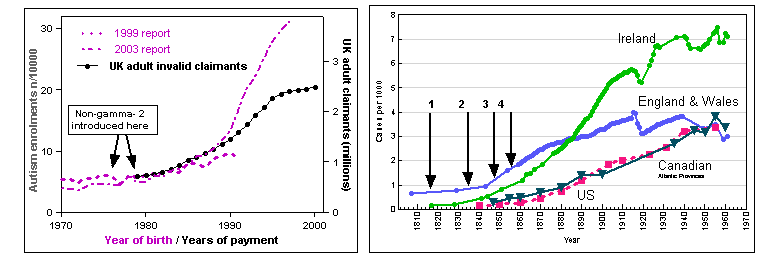Robin P Clarke lives in (link>>) a highly-dysfunctional society, severely defective in its processes for distinguishing genuine expertise and intellectual excellence from superficial illusions of expertise and excellence. For instance, as stated by Armstrong & Green (2017):
“Incentives for scientists should encourage the discovery of useful findings. However, [....] the incentive structure present at universities and journals is detrimental to the scientific value of research. [Thus we found that] to improve their chances of getting their papers published, researchers should avoid examining important problems, avoid challenging existing beliefs, avoid obtaining surprising findings, avoid using simple methods, avoid providing full disclosure, and avoid writing clearly.”
Robin P Clarke has made numerous scientific discoveries and non-trivial confirmed predictions, some of which are included in the book Experts Catastrophe. For instance:
(i) the prediction that mercury pollution would cause increased IQ rather than the decreased IQ mistakenly assumed by all the other mercury researchers (and thereby providing the first coherent explanation of the huge Flynn Effect mystery);
(ii) the prediction that the same (genetic and environmental) factors which generally cause increased IQ also at higher levels cause autism (and vice-versa);
(iii) the correlation of body symmetry with IQ;
(iv) that autistic individuals would have less irrational prejudice;
(v) inference from autistic hand-flapping that there were rat-like prehuman ancestors (Purgatorius for 160 million years);
(vi) no cure for Alzheimer’s disease (despite 20 years intensive research since);
(vii) antiinnatia factors (mercury) causing certain abrupt peculiar changes of society;
(viii) autism-related genes being mainly about general regulation of gene-expression (Casanova et al, 2016),
(viii) and indeed causing reduction of gene-expression
(MECP2);
(ix) major increase of adult disability coinciding with the autism increase (see Chapter 3); and
(x) enormous increases of disability in four countries following the original introduction of amalgam in the 19th century (also Chapter 3).
In the free content here, you can see for yourself the quality and appositeness of the evidence the book cites from others, the soundness of its reasoning about that evidence, and the quality of the presentation. The book’s chapters also explain a significant amount about the author’s biography and achievements, better than any summary here can.
Armstrong, J. S., Green, K. (2017). Guidelines for science.